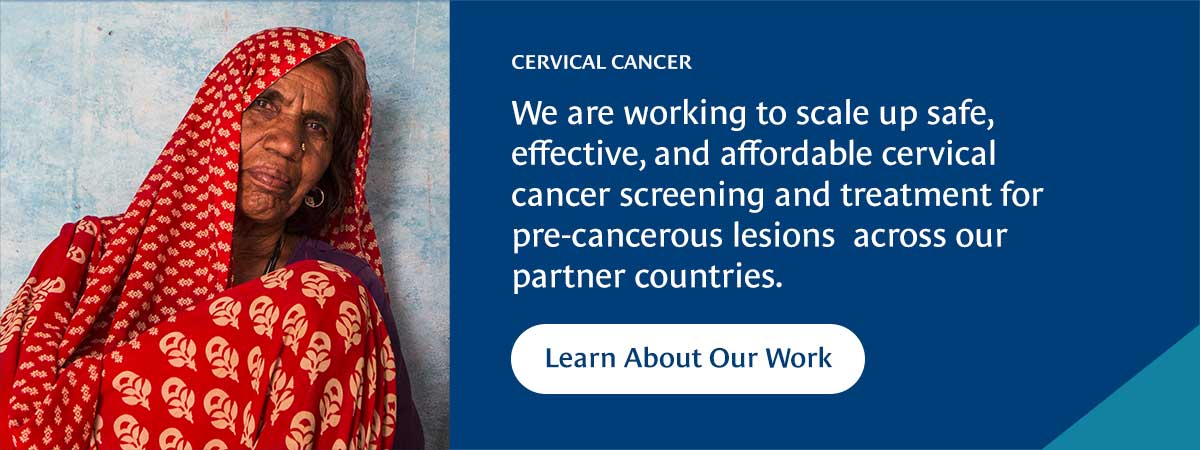Cervical cancer is one of the most preventable types of cancer, yet too many women continue to die of cervical cancer in low- and middle-income countries (LMICs) because prevention services are not available. More than 300,000 women die of cervical cancer each year, with more than 90 percent of deaths occurring in LMICs. The World Health Organization (WHO) is leading a global effort to scale up interventions that will eliminate cervical cancer for future generations. WHO recommends human papillomavirus (HPV testing) as the first-choice screening method for cervical cancer, using either thermal ablation or cryotherapy to treat all screen-positive women. CHAI’s Unitaid-funded cervical cancer program is proving out an affordable, effective package of tools and models for screening and treatment, putting countries on the path to elimination.
In this case study we describe the experiences and lessons learned from the introduction and scale up of human papillomavirus testing in Zimbabwe. The Zimbabwe program deployed differentiated models of care including offering HPV self-sample collection to allow easier access to cervical cancer screening, in particular among hard-to-reach populations. This case study provides insights into how HPV testing can be integrated into existing systems in low-resource settings; in turn allowing women from the most disadvantaged communities to receive a life-saving screen which will go a long way in reducing morbidity and preventing unnecessary cervical cancer related deaths.
This project was made possible with funding and support from Unitaid.






